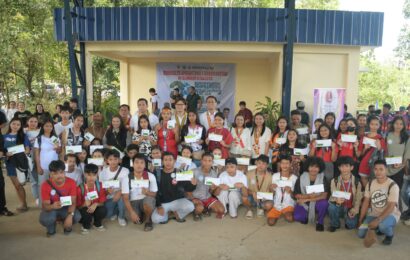FROM developing therapeutic vaccines to biotechnology breeding, China has mapped out measures to develop bioeconomy in the 14th Five-Year Plan (2021-2125) with rollout of a new development plan document.
The bioeconomy includes a wide range of biotic resources developed with biotechnology, such as smart wearable products for remote diagnosis. It covers many industries such as bio agriculture, biomedicine, bio energy and so forth, and is characterized as being highly profitable, reaching a large market and having high threshold.
According to the aforementioned development plan, which was rolled out by the National Development and Reform Commission (NDRC), China’s top economic planner, China has already made significant achievements in the bioeconomy over recent years, and the 14th Five-Year Plan period is an important window of opportunity for the sector.
SOURCE: GLOBAL TIMES (The Manila Times)
In the plan, the NDRC listed the development targets of China’s bioeconomy industries by 2025. For example, the NDRC noted that the total scale of bioeconomy will “reach a new stage,” while the proportion of bioeconomy added value in domestic GDP (gross domestic product) will also experience stable growth. The country should also see an “evident increase” in bioeconomy companies with annual revenue of over 10 billion yuan ($1.488 billion).
Bai Jingyu, director of the Center of Innovation-driven Development under the NDRC, noted during a press conference on Tuesday that China is aiming to achieve 22 trillion yuan ($3.28 trillion) of total bioeconomy output by the end of 2025, with the core industries amounting to more than 7.5 trillion yuan.
The NDRC also listed a number of pillar industries for bioeconomy, saying that the country would speed up the integration between biotechnologies and information technologies.
In particular, it noted that China would speed up upgrading vaccine research and production technologies, develop polyvalent vaccines and therapeutic vaccines to increase China’s capability in dealing with major infectious diseases.
China will also accelerate the industrial application of fields like biological breeding to safeguard the supply of agricultural products including grain and oil, as well as research new food like artificial protein to lower the environmental and resources pressure arising from traditional breeding industries.





